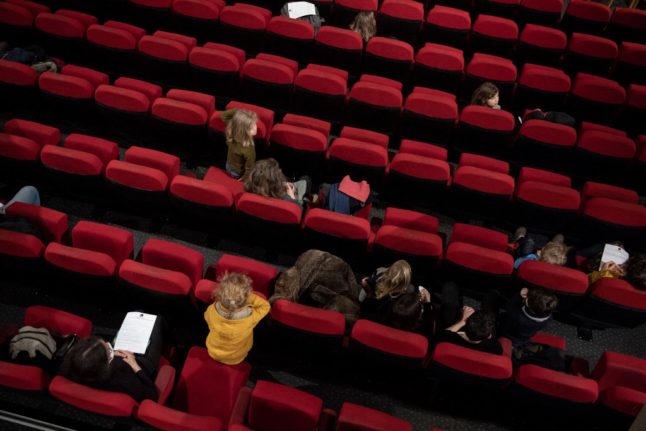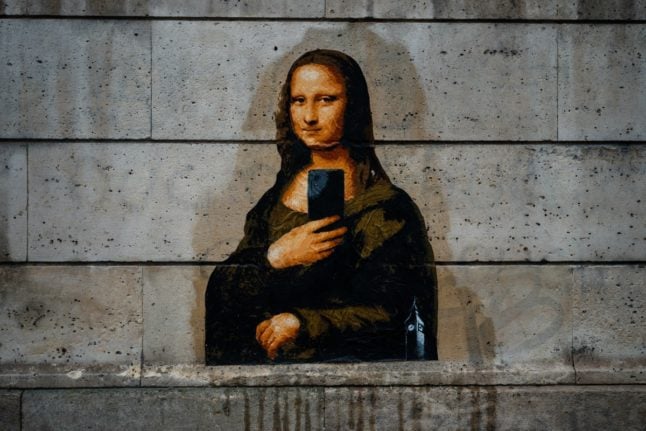For the past seven years, Lost in Frenchlation, a company that regularly screens French films with English subtitles, has given anglophones living in Paris – and more recently across France – the opportunity to enjoy French cinematic culture.
Lost in Frenchlation has also expanded out beyond Paris, with screenings in Lyon, Nice, Caen and Biarritz as well this month.
Here are the screenings across France that you will want to take note of:
Paris
Astérix & Obélix: L’Empire du Milieu – Take a trip back in time with France’s favourite Gaulish warriors, Astérix and Obélix. The year is 50 BC, and the only daughter of the Empress of China calls on the valiant heroes to help her rescue her mother and save her homeland after a coup from a traitorous prince.
The “Middle Kingdom” (Empire du milieu), directed by César Award winning director Guillaume Canet (who also stars in the movie himself), will mark the fifth live-action Astérix and Obélix film, fit for both children and adults alike.
The screening will take place at the Luminor in Paris’ 4th arrondisement (at 20 Rue du Temple) on Sunday, March 12th at 8pm. All are invited to join the Lost in Frenchlation team for pre-drinks at 7pm.
Tickets will cost €7 for those eligible for reductions, and €11 for all others. You can book HERE.
Toi Non Plus tu n’as Rien Vu – Directed by Béatrice Pollet, this film tells the story of two classmates pursuing careers in law. One of them will go on to be charged with attempted homicide of her newborn child, and the other will be tasked with defending her. Tackling the subject of pregnancy denial, Pollet dives into the complexity of pregnancy, motherhood, and postpartum in all its complexity.
The screening will take place Friday, March 17th at the Club de l’Étoile cinema at 14 Rue Troyon in Paris’ 8th arrondisement.
Drinks will begin at 7pm, and the screening will start at 8pm. Feel free to stick around after the film for a Q&A with the director.
Tickets will start at €8 for those eligible for reductions, and for all others they will cost €10. You can find them online HERE.
221121 – Toi_Non_Plus_Inter_Mix (trailer TEMP pour TALLINN).mov from Lost in Frenchlation on Vimeo.
Petites – In her first feature film, director Julie Lerat-Gersant’s Petites follows the story of Camille, who is 16 years old and pregnant. After a judge places her in a maternal centre away from the care of her mother, Camille becomes friends with Alison, another young mom.
The film will be screened on Friday, March 24th at the Luminor cinema near Hotel de Ville in Paris’ 4th arrondisement (20 Rue du temple).
Drinks will begin at 7pm, with the screening starting at 8pm. For those intersted, the Women of Paris walking group will host a tour at 5pm ahead of the film. This additional option costs €15 per ticket. You can find more information HERE.
Tickets for the film are available online HERE, and they cost €7 for those eligible for discounts, and €11 for all others.
Divertimento – Director Marie-Castille Mention-Schaar follows the story of two sisters with dreams of becoming classical musicians. Taking place in 1995, the twin sisters Zahia and Fettouma Ziouani are 17 years old and growing up in a working class neighbourhood north of Paris. The film follows their journey as they attempt to reach their dreams and make classical music accessible for all.
The screening will take place at the L’Arlequin theatre in Paris 6th arrondisement (76 Rue de Rennes) on Thursday, March 30th.
Pre-drinks will start at the piano-bar at 7pm, and the screening will show at 8pm.
You can purchase tickets online HERE. Prices will range from €8.50-€11 depending on your situation.
To watch the trailer with English subtitles, click HERE.
Biarritz
De Grandes Espérances – This film tells the story of a young woman, Madeleine, who is visiting Corsica with her boyfriend, Antoine, while preparing for an important entrance examination for a prestigious French university. The couple find themselves entangled in an unexpected drama, which could impact their lives forever.
The film will be showed at the Cinéma Le Royal (8 Av. du Maréchal Foch) in Biarritz on Thursday, March 30th. Pre-screening drinks will start at 7:30pm, and the film will play at 8pm.
Tickets range from €4.50 – €7, depending on your situation. You can buy them online HERE.
Caen
La Syndicaliste – Telling the true story of Maureen Kearney, a union representative who went on to become an important whistleblower. In 2012, Kearny discovers a French state secret that will go on to have lasting ramifications for the French nuclear industry. She goes on to fight tooth and nail to bring the scandal to light.
Join the Café Polyglotte and Lost in Frenchlation teams on Wednesday, March 22nd for pre-screening drinks at the “Bar du Café”. The screening will begin at 9pm at Café Polyglotte (4 square du théâtre, 14200 Hérouville-Saint-Clair).
Tickets cost €4.50, which you can purchase HERE.
Lyon
De Grandes Espérances – This film tells the story of a young woman, Madeleine, who is visiting Corsica with her boyfriend, Antoine, while preparing for an important entrance examination for a prestigious French university. The couple find themselves entangled in an unexpected drama, which could impact their lives forever.
The screening will take place on Thursday, March 30th at Cinéma Comoedia (13 Avenue Berthelot, Lyon 69007). You can arrive early at 7:30pm for pre-drinks. The screening will begin at 8:30pm.
Tickets range in price from €7.70 – €9.80, depending on whether you are eligible for discounts. You can find the Facebook event here.
Nice
La Nuit du 12 – Winner of the “best film” of 2023 in the César awards, this movie follows a young and ambitious investigator in Grenoble as he attempts to solve the murder of a young woman, Clara.
Hollywood Reporter called the movie a “taut and piercing thriller” that delves into issues of violence, gender, and policing in contemporary France.
The screening will take place at Cinéma Rialto (4 rue de Rivoli, 06000 Nice) on Friday, March 31st, with pre-drinks starting at 7:30pm. The film will be showed at 8:30pm.
Tickets will be available for €7 for those eligible for discounts, and €8.50 for all others. You can reserve online HERE.




 Please whitelist us to continue reading.
Please whitelist us to continue reading.
Member comments